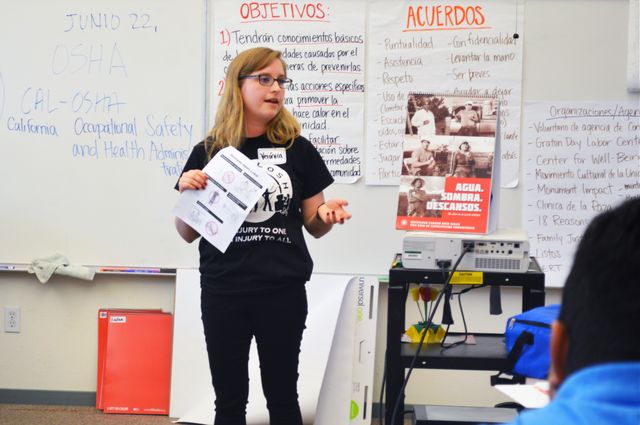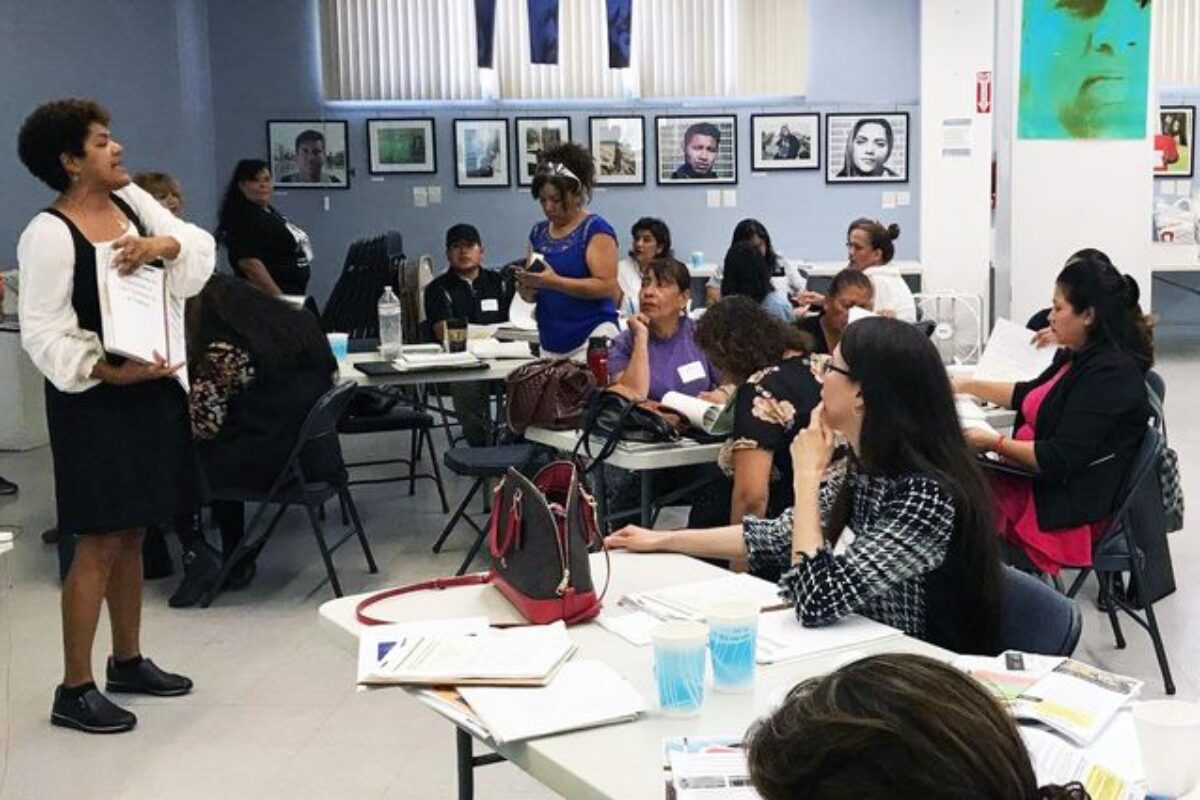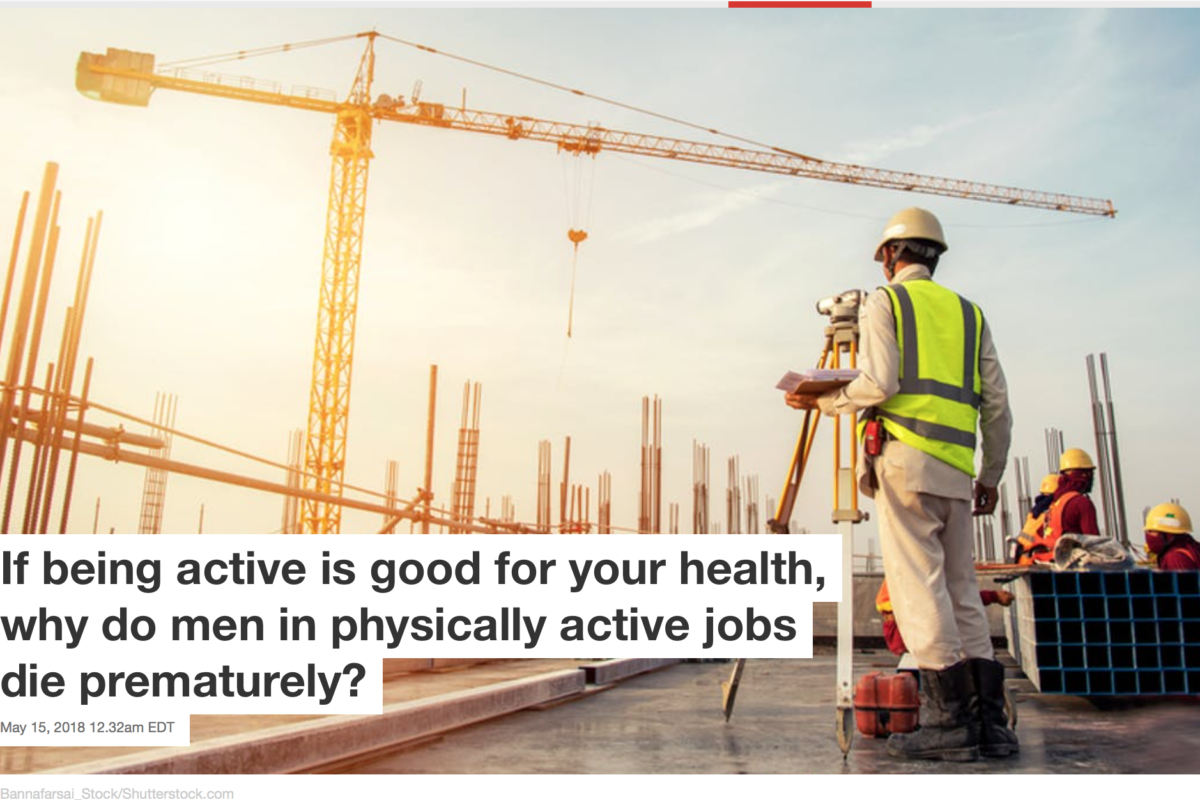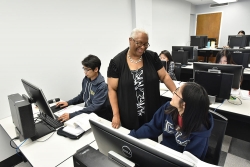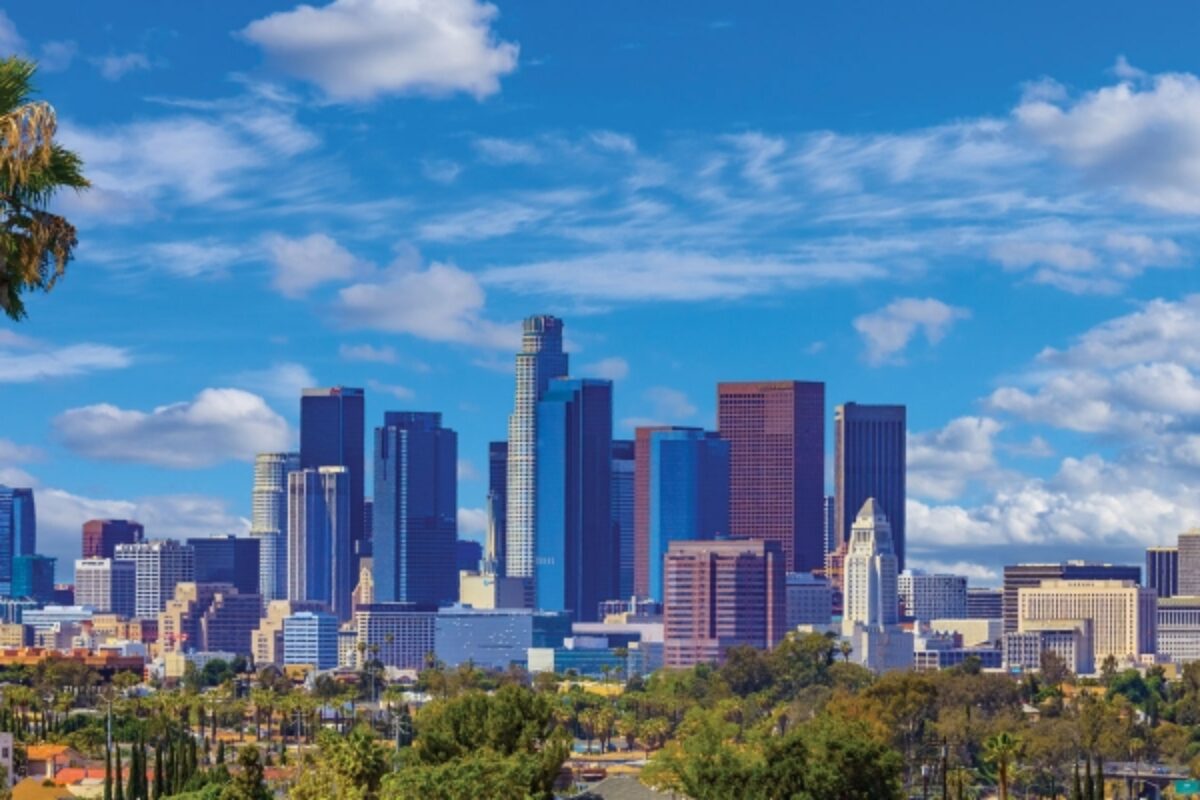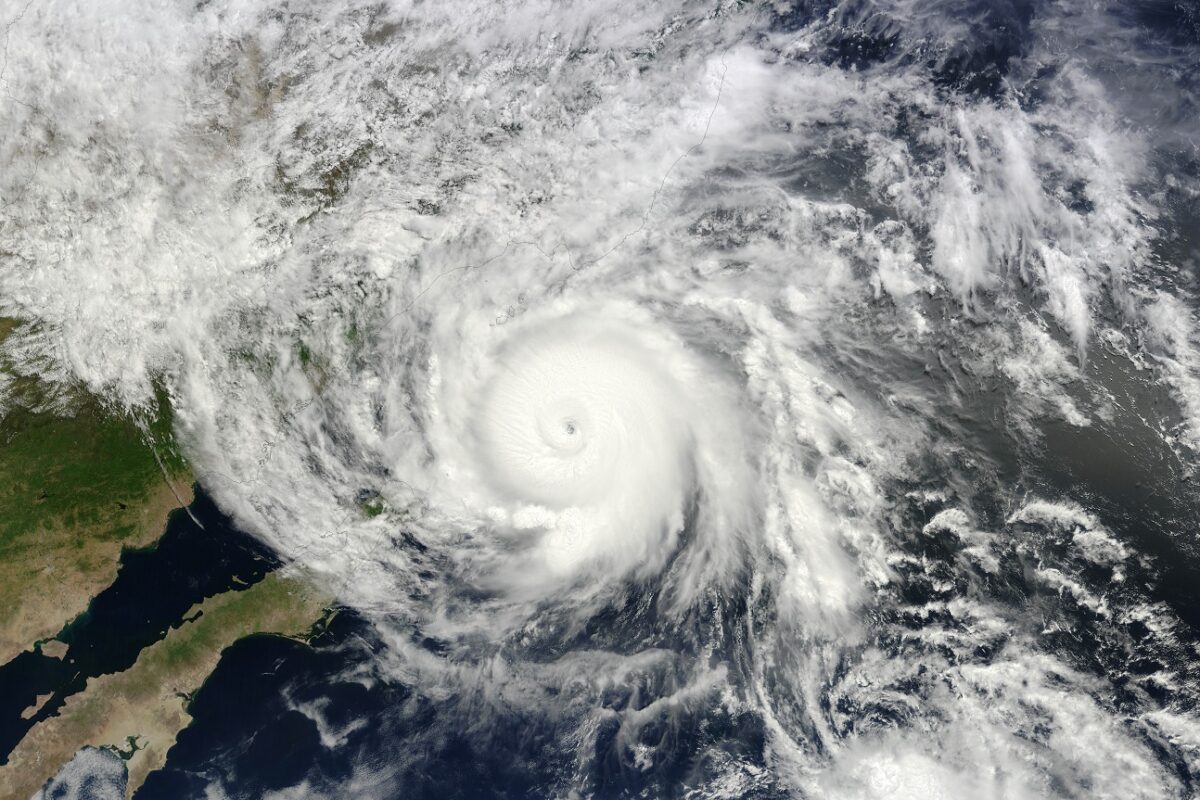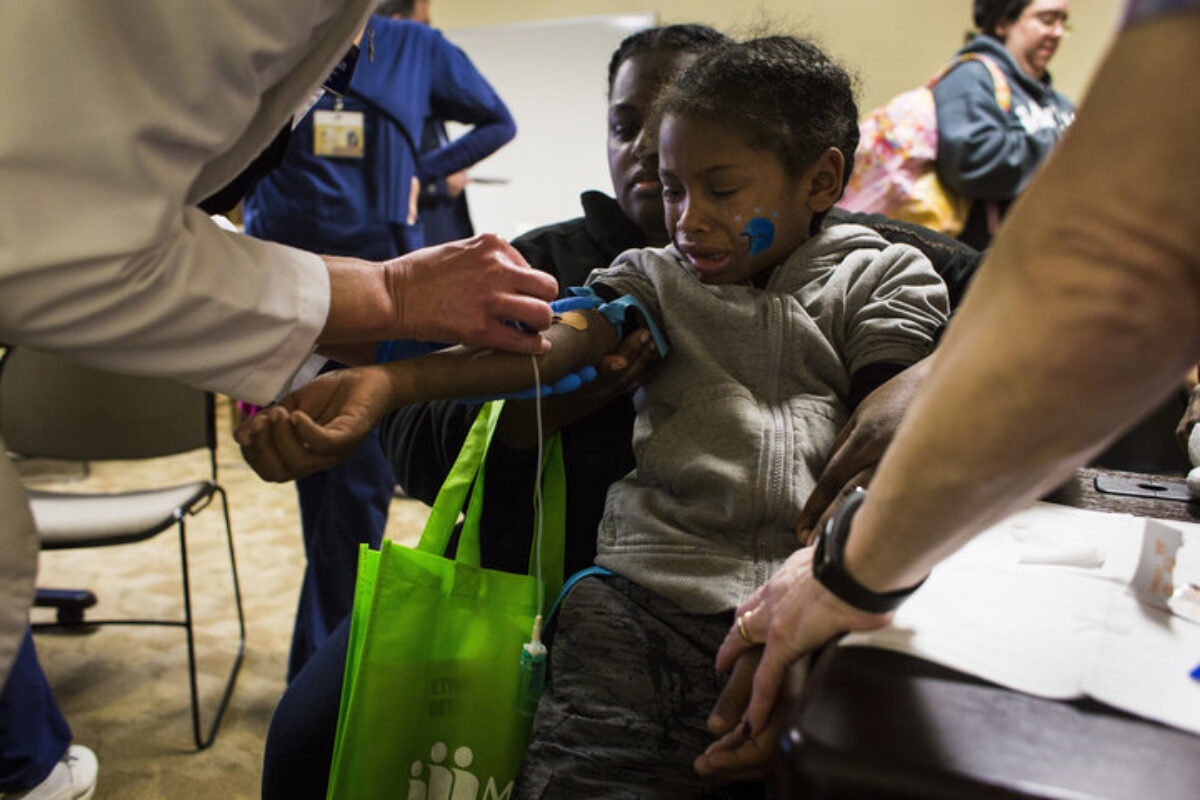Today, 115 scientists and health professionals sent a letter to the Senate Appropriations Committee urging that they maintain or increase funding for the U.S. Environmental Protection Agency, with an emphasis on standards and programs that protect the health of pregnant women and children. The letter was also signed by the American Congress of Obstetricians & Gynecologists and the National Hispanic Medical Association.
The Senate Appropriations Committee is scheduled to vote on a budget recommendation for EPA on Thursday, Oct. 19, 2017.
Scientists & Health Professionals Letter to Senate Appropriations (PDF)
October 16, 2017
RE: Budget for the Environmental Protection Agency (EPA)
Dear Chairman Cochran, Vice Chairman Leahy, and other members of the Senate Committee on Appropriations,
We write collectively as a group of scientists, clinicians, health professionals and children’s advocates, to express our strong support for EPA standards and programs that:
- Protect children’s and pregnant women’s health and
- Enable the EPA to carry out its mandate to protect communities from pesticides and toxic chemicals using the most current science and scientific practices.
The health of the public, especially those who are most vulnerable, depends on the EPA having enough resources to carry out the research, programs and processes described in more detail below. We urge you to support a budget for EPA that maintains or increases funding for these critical areas. Funds directed to EPA are a wise investment of taxpayer dollars that provides returns many times over in the form of healthy children, pregnant women, families and communities—the human resources who form the critical foundation of a thriving and growing economy.
1. EPA programs help protect children’s and pregnant women’s health from toxic chemicals in the air, water, home and other environments.
We support maintaining or increasing the allocation of funds to EPA’s Science To Achieve Results (STAR) programs for research on children’s and pregnant women’s health and effects of the environment. The STAR program engages some of the nation’s best scientists, researchers, and engineers through grants and graduate fellowships for research complementing EPA’s own intramural research program. This funding mechanism supports specialized research that is critical to inform science-‐based policy-‐ and decision-‐making at the Agency that is not funded elsewhere.
We support maintaining or increasing the allocation of funds to programs to prevent lead poisoning and exposures to air pollutants and toxic chemicals in children and pregnant women and for environmental justice programs. As the ongoing Flint water crisis and recovery show, there is still a critical need to support these programs at the federal, state and local levels. Lead is a known neurotoxic chemical that has no safe exposure level, and yet children are still being exposed to this and many damaging chemicals around the nation. The Flint events also highlight that low-‐income and communities of color bear disproportionate burdens of toxic chemical exposures; thus, continued funding for environmental justice programs and federal oversight are also needed.
We support maintaining or increasing the allocation of funds for local and state programs to monitor and improve the quality of the environment, which are vital to ensure healthy communities. For example, state and local air quality management, water pollution control, public water system supervision, Superfund, and brownfields programs are just a few of the many programs that are essential to ensure that the environment is free of dangerous levels of substances that could threaten children’s and pregnant women’s health. These programs have a proven track record of carrying out the activities necessary to provide cleaner air, water and environments for families; we are very concerned that reducing funding to these programs could reverse this progress and result in higher exposures to hazardous chemicals in the air, water, food, and household consumer products we encounter daily.
We support maintaining or increasing the allocation of funds for federal and state enforcement of statutes and regulations under EPA authority.Enforcement of environmental regulations is critical to protecting the health of pregnant women and children, and air and water quality from hazardous chemicals and pollutants. Enforcement ensures a level playing field, so corporations that violate the law do not gain an economic advantage over those corporations that act in accordance with regulations that protect public health and the environment.
We support funding to maintain or increase EPA’s total budget. EPA’s work under all of the major statutes has far-‐reaching impacts on children’s and pregnant women’s environmental health. EPA’s workload is increasing, while its budgets have not kept pace. At minimum, EPA’s 2016 appropriations levels for funding and for staff (full-‐time equivalent (FTE)) should be maintained.
2. EPA’s research and the Integrated Risk Information System (IRIS) program are critical to evaluate pesticides and chemicals and protect the public from those that pose unreasonable risks.
We support funding to maintain or increase EPA’s research budget. The EPA Office of Chemical Safety and Pollution Prevention is tasked with protecting Americans from risky pesticides, industrial, commercial and consumer product chemicals in their homes, workplaces and communities. Last year, Congress passed the Lautenberg Amendment reforms to the Toxic Substances Control Act, which EPA is now implementing. The Agency has enormous statutory obligations and responsibility to protect families from dangerous chemicals; EPA’s total research budget should be realigned to reflect this.
We support fully funding the IRIS program. The IRIS program carries out independent assessments of chemicals, which are important resources for local, state and national authorities to use in decision making on hazardous chemicals, including informing regulations and clean-‐up standards. As reported by EPA’s Scientific Advisory Board (September, 2017), the IRIS program incorporates a number of scientific best practices in their assessment process, including appropriate evaluation of study risk of bias (not numerical scoring of reporting quality); integrating primary toxicity information and health effects from animal and human studies, supported by mechanistic or other types of data; and using free and open source collaborative software to facilitate cross-‐Agency collaborations, communication, and public transparency.1 Funding for the IRIS program is needed for EPA to move forward with chemical evaluations and make science-‐based decisions as required by law.
We appreciate the opportunity to provide our input on appropriations for EPA. Please do not hesitate to contact us with any questions regarding these comments. The signers’ institutional affiliations below are included for identification purposes only and do not necessarily imply any institutional endorsement or support, unless indicated otherwise.
1 Memo from EPA Scientific Advisory Board to Administrator Pruitt, Sept 1, 2017. Science Advisory Board comments on EPA’s response to recommendations on the Integrated Risk Information System. https://yosemite.epa.gov/sab/sabproduct.nsf/0/A9A9ACCE42B6AA0E8525818E004CC597/$File/EPA-‐SAB-‐17-‐ 008.pdf
Sincerely,
Veena Singla, PhD, Director of Research Translation; Juleen Lam, PhD, Research Scientist; and Tracey Woodruff, PhD, Director
Program on Reproductive Health and the Environment University of California, San Francisco
Laura Anderko RN PhD
Professor & Robert and Kathleen Scanlon Endowed Chair in Values Based Healthcare School of Nursing & Health Studies, Georgetown University
Ann Aschengrau, ScD Professor of Epidemiology
Boston University School of Public Health
Kathy Attar, MPH
Toxics Program Manager Physicians for Social Responsibility
Edward Avol, MS
Professor, Department of Preventive Medicine University of Southern California
John Balmes, MD
Professor of Medicine, UCSF
Professor of Environmental Health Sciences, School of Public Health, UC Berkeley
Jacqueline M. Barkoski, MPH, PhD
Postdoctoral Scholar, Department of Public Health Sciences University of California, Davis
Naomi Bardach
Associate Professor of Pediatrics and Health Policy University of California San Francisco
David C. Bellinger, PhD, MSc
Boston Children’s Hospital, Harvard Medical School Harvard T.H. Chan School of Public Health
Eugene B. Benson, JD
Adjunct Professor, City Planning and Urban Affairs, Boston University Metropolitan College Adjunct Clinical Assistant Professor of Environmental Health
Boston University School of Public Health
Lisa Bero, PhD
Professor, University of Sydney
Adjunct Professor, University of California, San Francisco
Leslie I. Boden, PhD Professor
Boston University School of Public Health
Bruce Blumberg, PhD
Professor, Department of Developmental and Cell Biology University of California, Irvine
Asa Bradman, PhD, MS
Associate Director, Center for Environmental Research and Children’s Health (CERCH) Associate Adjunct Professor of Environmental Health Sciences
School of Public Health, UC Berkeley
Phil Brown, PhD
University Distinguished Professor of Sociology and Health Sciences Northeastern University
Susan Buchanan, MD, MPH Associate Professor and Director
Great Lakes Center for Children’s Environmental Health University of Illinois at Chicago
Marie Angelique Cabiya, MD Physician
Advocate Medical Group
Carla Campbell, MD, MS, FAAP
Associate Professor of Public Health, MPH Program Director Department of Public Health Sciences, College of Health Sciences University of Texas at El Paso
Adelita G. Cantu, PhD, RN Associate Professor
Alliance of Nurses for Healthy Environments
Courtney Carignan, PhD
Assistant Professor Michigan State University
Susan D. Chapnick
President & Principal Scientist New Environmental Horizons, Inc.
Aimin Chen, MD, PhD
Associate Professor, Department of Environmental Health University of Cincinnati College of Medicine
Terrence J. Collins, Ph.D., Hon FRSNZ Teresa Heinz Professor of Green Chemistry Director, Institute for Green Science
Department of Chemistry, Carnegie Mellon University
Jeanne A Conry, MD PhD Past President
The American Congress of Obstetricians and Gynecologists
President and CEO, The Environmental Health Leadership Foundation
Carl F. Cranor, PhD, MSL
Distinguished Professor of Philosophy and Faculty Member of Environmental Toxicology University of California, Riverside
Kathryn Crawford, MS Graduate Student
Boston University School of Public Health
Nathaniel G. DeNicola, MD, MSHP
Assistant Professor of Obstetrics & Gynecology George Washington University
Vice Chair of Telehealth Taskforce
American Congress of Obstetricians & Gynecologists
Kristie Ellickson, PhD
Graduate Faculty, Environmental Health University of Minnesota
Brenda Eskenazi, PhD
Jennifer and Brian Maxwell Professor of Maternal and Child Health and Epidemiology Director, Center for Environmental Research and Children’s Health (CERCH)
School of Public Health, University of California, Berkeley
Shohreh Farzan, PhD
Assistant Professor of Preventive Medicine Keck School of Medicine
University of Southern California
Steven G. Gilbert, PhD, DABT Executive Director
Institute of Neurotoxicology & Neurological Disorders
Myron L. Gildesgame, PhD. Retired, Director and Chief Planner
Massachusetts Office of Water Resources
Barbara Gottlieb
Environment & Health Director Physicians for Social Responsibility Washington, DC
Robert M. Gould, MD
Associate Adjunct Professor, Department of Obstetrics, Gynecology and Reproductive Sciences University of California, San Francisco
President, San Francisco Bay Area Chapter, Physicians for Social Responsibility
Mark E. Hahn, PhD
Senior Scientist, Biology Department Woods Hole Oceanographic Institution
Alycia Halladay, PhD
Chief Science Officer, Autism Science Foundation
Adjunct, Dept. of Pharmacology and Toxicology, Rutgers University
Kim Harley, MPH, PhD
Associate Adjunct Professor, Maternal and Child Health
Associate Director for Health Effects, Center for Environmental Research and Children’s Health University of California, Berkeley
Dale Hattis, PhD Research Professor
The George Perkins Marsh Institute Clark University
Marissa Hauptman, MD, MPH Physician
Boston Children’s Hospital
Russ Hauser, MD
Professor of Environmental and Occupational Epidemiology Harvard T.H. Chan School of Public Health
Erin Haynes, DrPH, MS
Associate Professor of Environmental Health College of Medicine, University of Cincinnati
Wendy Heiger-‐Bernays, PhD
Clinical Professor of Environmental Health Director, EH MPH Program and EHA Certificate Boston University School of Public Health
Amy Herring, ScD Professor
Duke University
Irva Hertz-‐Picciotto, PhD
Director, Environmental Health Sciences Center, UC Davis
Professor, Department of Public Health Sciences and the MIND Institute University of California, Davis
Joan F. Hilton Professor
Department of Epidemiology & Biostatistics University of California, San Francisco
Deborah Hirtz M.D.
Professor, Neurological Sciences and Pediatrics University of Vermont School of Medicine
Maeve Howett, PhD
Assistant Dean and Clinical Professor, College of Nursing University of Massachusetts Amherst
Katie Huffling, RN, MS, CNM Executive Director
Alliance of Nurses for Healthy Environments
H. Patricia Hynes, PhD
Emeritus Professor of Environmental Health Boston University School of Public Health
Dan Jaffe, PhD
Professor and Chair, Physical Sciences Division School of Science. Technology, Engineering and Math University of Washington
Doreen Karoll, MD
Developmental and Behavioral Pediatrician
Clinical Instructor, Boston University Medical School
Patricia D. Koman, PhD, MPP President and Senior Scientist Green Barn Research Associates
Erica Koustas, PhD Scientific Consultant
University of California, San Francisco
Carol Kwiatkowski, PhD
Executive Director, The Endocrine Disruption Exchange (TEDX) Assistant Professor Adjunct, North Carolina State University and University of Colorado, Boulder
Diana J. Laird, PhD
Associate Professor, Department of Obstetrics, Gynecology and Reproductive Sciences University of California, San Francisco
Philip J. Landrigan, MD, MSc, FAAP Dean for Global Health
Professor of Environmental Medicine, Public Health and Pediatrics Arnhold Institute for Global Health
Icahn School of Medicine at Mount Sinai
Bruce P. Lanphear, MD, MPH
Clinician Scientist, Child & Family Research Institute, BC Children’s Hospital Professor, Faculty of Health Sciences, Simon Fraser University, Vancouver, BC
Patricia Lasley
PEHSU Region 5 Coordinator University of Illinois, Chicago
Arthur Lavin, M.D. Advanced Pediatrics Cleveland, OH
Soo-‐Jeong Lee Associate Professor
School of Nursing, University of California San Francisco
Jonathan Levy, ScD
Interim Chair and Professor Department of Environmental Health
Boston University School of Public Health
Patricia Janulewicz Lloyd, DSc Assistant Professor
Department of Environmental Health Boston University School of Public Health
Peggy Lopipero-‐Langmo, MPH Environmental Science Instructor City College of San Francisco
Jennifer Lowry, MD, FAAP Pediatrician and Toxicologist Kansas City, MO
Ulrike Luderer, MD, PhD
Professor, Department of Developmental and Cell Biology University of California, Irvine
Kristen Malecki Assistant Professor
University of Wisconsin, Madison
Emily Marquez, Ph.D. Staff Scientist
Pesticide Action Network
Andres Martinez, PhD Research engineer
Department of Civil & Environmental Engineering The University of Iowa
Ethan Mascoop, MPH
Boston University School of Public Health
Rob McConnell, MD
Professor of Preventive Medicine University of Southern California
Jennifer McPartland, PhD
Senior Scientist, Health Program Environmental Defense Fund
Catherine Metayer, MD, PhD
Faculty, School of Public Health University of California, Berkeley
David Michaels, PhD, MPH
Professor, Department of Environmental and Occupational Health Milken Institute School of Public Health
The George Washington University
Mark Miller MD, MPH Assistant Clinical Professor
University of California, San Francisco
Pamela Miller
Executive Director, Alaska Community Action on Toxics Anchorage, AK
Mark A. Mitchell M.D., MPH, FACPM
Chair, National Medical Association Council on Medical Legislation
Co-‐Chair, National Medical Association Commission on Environmental Health
Stefano Monti, Ph.D.
Associate Professor of Medicine and Biostatistics Boston University, Boston, MA
Rachel Morello-‐Frosch, PhD, MPH Professor, School of Public Health University of California, Berkeley
Raymond Neutra, DrPH, MPH
Principal, Raymond Richard Neutra Consultants
Thomas B. Newman, MD, MPH
Professor Emeritus of Epidemiology & Biostatistics and Pediatrics, School of Medicine University of California, San Francisco
Peter Orris, MD, MPH
Professor and Chief, Occupational & Environmental Medicine University of Illinois Hospital and Health Science System
David Ozonoff, MD, MPH Professor of Environmental Health
Boston University School of Public Health
Vasantha Padmanabhan, MS, PhD
Professor, Departments of Pediatrics, Obstetrics and Gynecology, Molecular and Integrative Physiology and Environmental Health Sciences
University of Michigan
Heather Patisaul, PhD
Associate Professor, Department of Biological Sciences NC State University
Katherine Pelch PhD Senior Scientist
The Endocrine Disruption Exchange
Frederica P. Perera, DrPH, PhD Professor of Public Health
Director, Columbia Center for Children’s Environmental Health Dept. of Environmental Health Sciences
Mailman School of Public Health, Columbia University
Elena Rios, MD, MSPH, FACP President & CEO
National Hispanic Medical Association
Beate Ritz MD, PhD Professor of Epidemiology
Center for Occupational and Environmental Health FSPH, UCLA
Joshua F. Robinson Assistant Professor
Department of Obstetrics, Gynecology & Reproductive Sciences University of California, San Francisco
Melissa Rose, MPH Program Manager
Environmental Health Sciences Center Center for Children’s Environmental Health University of California, Davis
Nancy C. Rothman, Ph.D.
CEO & Principal Scientist
New Environmental Horizons, Inc.
Leslie Rubin, MD Physician
Break the Cycle of Health Disparities, Inc
Ruthann Rudel, MS Director of Research Silent Spring Institute
Madeleine K. Scammell, DSc
Associate Professor of Environmental Health Boston University School of Public Health
Susan L. Schantz, PhD
Professor of Toxicology and Neuroscience, Illinois Children’s Environmental Health Research Center Director, Beckman Institute for Advanced Science and Technology
University of Illinois, Urbana-‐Champaign
Ted Schettler MD, MPH Science DirectorScience and Environmental Health Network
Perry Sheffield, MD, MPH Assistant Professor
Icahn School of Medicine at Mount Sinai
David Sherr, Ph.D.
Professor
Boston University
Gordon J. Strewler, MD Professor of Medicine
University of California, San Francisco
Patrice Sutton, MPH Research Scientist
Program on Reproductive Health and the Environment University of California, San Francisco
Maureen Swanson, MPA Director, Healthy Children Project
Co-‐Director, Project TENDR (Targeting Environmental Neuro-‐Developmental Risks) Learning Disabilities Association of America
Evelyn O. Talbott, DrPH, MPH Professsor, Dept of Epidemiology University of Pittsburgh
Tanya Khemet Taiwo, MPH PhDc. Dept. of Epidemiology
University of California, Davis
Ho Luong Tran, MD, MPH President & CEO
National Council of Asian Pacific Islander Physicians
Laura N Vandenberg Assistant Professor
University of Massachusetts, Amherst
Ondine von Ehrenstein, PhD
Associate Professor, Department of Community Health Sciences Fielding School of Public Health
University of California, Los Angeles
Aolin Wang, PhD Postdoctoral Scholar
Program on Reproductive Health and the Environment University of California, San Francisco
Thomas Webster, DSc
Professor, Dept. of Environmental Health Boston University School of Public Health
Robin M. Whyatt, DrPH Professor Emeritus
Department of Environmental Health Sciences Mailman School of Public Health, Columbia University
Lauren Zajac, MD, MPH, FAAP Pediatrician, Assistant Professor
Department of Environmental Medicine and Public Health Icahn School of Medicine at Mount Sinai
Marya Zlatnik, MD, MMS
Professor, Department of Obstetrics, Gynecology and Reproductive Sciences University of California, San Francisco
R. Thomas Zoeller, Professor Biology Department
University of Massachusetts Amherst
Ami R. Zota, ScD, MS
Assistant Professor, Department of Environmental and Occupational Health Milken Institute School of Public Health
George Washington University
Medical Associations
American Congress of Obstetricians & Gynecologists
National Council of Asian Pacific Islander Physician National Hispanic Medical Association
—————————————————————
Visit Project TENDR for more information http://projecttendr.com/scientists-health-professionals-letter-to-senate…
Image by Daniel Mennerich licensed for use under Creative Commons https://creativecommons.org/licenses/by-nc-nd/2.0/
